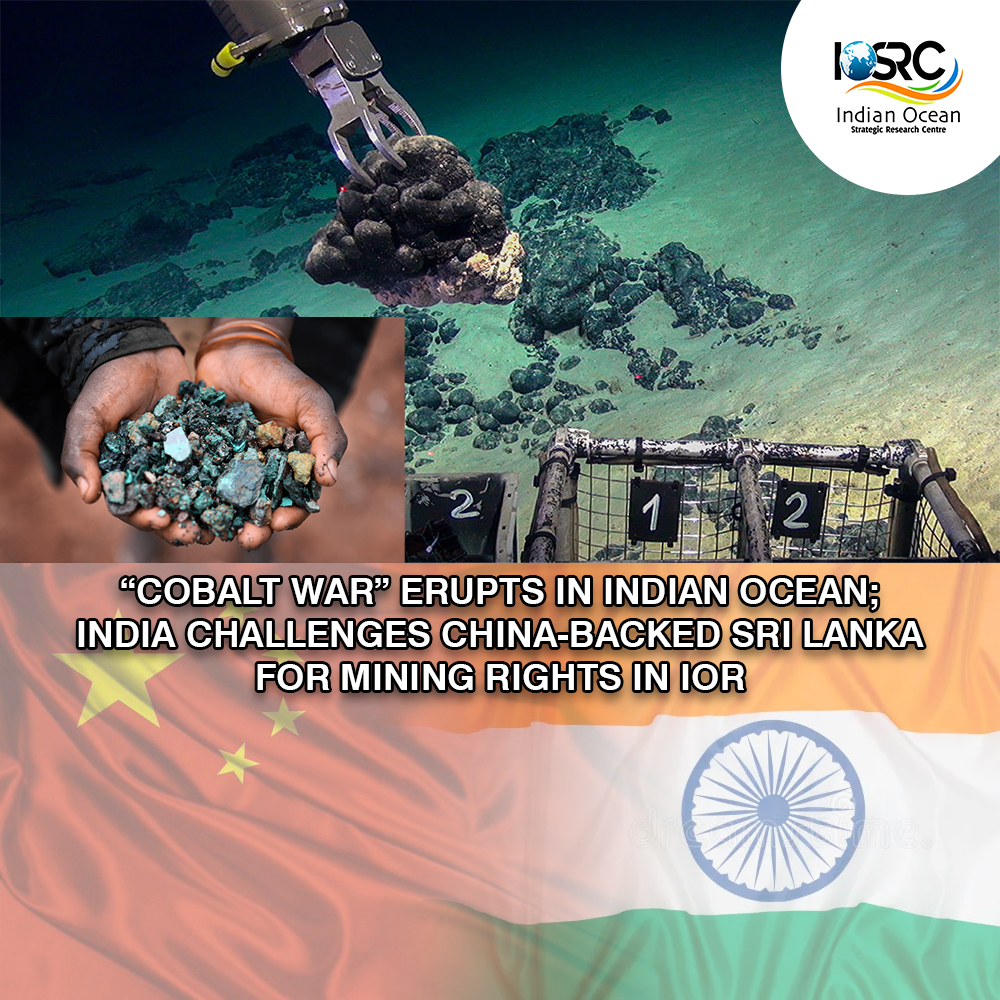
China’s growing influence in the Indian Ocean Region (IOR) has forced India to apply for permission to explore the region’s cobalt riches. India will be at odds with Sri Lanka after submitting its most recent application to the International Seabed Authority, situated in Jamaica. Sri Lanka wanted to extend its continental shelf so that it would extend beneath the ocean’s Cobalt Mountain within its territorial seas.
China Is Beaten By India In “Will To Fight” For Nation; Japan, Taiwan, And South Korea Fight To Draw In New Troops
China controls the majority of the cobalt supply chain, and an increasing number of Chinese survey vessels have been visiting India to map its backyard. The Chinese survey vessel Yuan Wang, which is capable of tracking and sustaining intercontinental ballistic missiles as well as satellites, entered the IoR while this story was being written after passing through Indonesian waters.
On January 18, 2024, India submitted their proposal to the International Seabed Authority. It requested permission to investigate “cobalt-rich ferromanganese crusts” in the Central Indian Ocean’s Afanasy Nikitin Seamount. The Indian government’s Ministry of Earth Sciences, under the Earth System Science Organization (ESSO), submitted the application.
For India, which has set a deadline of 2070 for achieving net-zero emissions, cobalt is a crucial component of electric car batteries.
There are 150 blocks in the application, none larger than 20 square kilometres, and it encompasses an area of 3,000 square kilometres in the Central Indian Ocean. Six clusters, each of 12 to 50 blocks, are formed out of the blocks. The Nikitin Seamount is located 1,350 miles east of the Indian coast, east of the Maldives.
India has already paid US $500,000 to the Authority so that its application might be reviewed. A plan has already been prepared by the ESSO for the initial five-year term. By carrying out “an extensive geophysical, geological, biological, oceanographic, and environmental study” in the region, the aim is to further the exploration operations of cobalt-rich ferromanganese crusts.
The contractor will investigate the suggested area while taking the 15-year long-term strategy into account. Phase I, which spans years 1 through 5, Phase II, which spans years 6 through 10, and Phase III, which spans years 11 through 15, are the three main work phases of the proposed work plan for investigating the cobalt-rich crust in the Afanasy Nikitin Seamount. Additionally, training programmes (both on land and at sea) shall be implemented for a minimum of ten trainees for candidates chosen by the Authority.
Although the application appears standard, the ISA discovered that Afanasy Nikitin Seamount is located within a territory that is likewise claimed by another nation while reviewing India’s petition. Al Jazeera quoted an ISA note, stating: “Experts believe Sri Lanka is the country the seabed authority was referring to, even though the ISA did not name this other country in its response to India.” The margin of a nation’s landmass below the water is known as its continental shelf.
India did not reply to the ISA’s note in a timely manner, so it was not taken into consideration on March 12 during the ISA’s 29th Session of the Legal and Technical Commission. The Authority has since placed India’s application on hold.
Sri Lanka’s Application
In accordance with the United Nations Convention on the Law of the Sea, Sri Lanka requested an expansion of its continental shelf beyond the general limit of 200 nautical miles. As to the convention, a nation’s exclusive economic zone extends up to 200 nautical miles offshore.
The nation is the only one with the authority to economically utilise the region without interfering with international shipping.
Coastal nations may, nevertheless, file a petition with the UN Commission on the Limits of the Continental Shelf (CLCS) if they believe their continental shelves’ outer boundaries go farther than 200 nautical miles.
India answered Sri Lanka’s claims in 2010 without raising any issues. But in 2022, India argued that Sri Lanka’s claims would infringe upon its rights over portions of the continental shelf, and as a result, the position was reversed. Requests from New Delhi were made to the commission not to “consider and qualify” Sri Lanka’s submission.
Perched on the tip of the Indian Ocean Rim, Sri Lanka has imposed a one-year ban on foreign research vessels accessing its seas as of January 1, 2024. Concerns about Chinese research vessels exploring large areas of the Indian Ocean Rim under the guise of scientific testing have been voiced by India on multiple occasions.
The information obtained from these experiments is crucial for Chinese submarines aiming to cross the East Indian Ocean Rip and the shallow waters of the Malacca Strait, a move that has greatly alarmed India.
China has taken control of Sri Lanka after obtaining the lease for the port of Hambantota, which was constructed by Chinese businesses. After the island nation neglected to pay the Chinese companies, Sri Lanka granted Beijing a port directly across from India. This incident raised doubts in India’s ability to stand up to China in relation to Sri Lanka.
The Chinese Oceanographic survey ship Shi Yan 6 arrived in the area in 2023 and berthed at Sri Lanka’s Hambantota Port during a three-month operation.
These surveys yield data on seabed conditions that are useful for both military and civilian applications, in addition to their apparent scientific objectives. Submarine detection is impacted by hydrocarbons, water, and seabed conditions in addition to seismic data, which is crucial for evaluating geological conditions.
Scientific research vessels can also employ their instruments for naval surveillance, obtaining information about nearby foreign military installations and vessels.
